Although incredibly controversial, inbreeding in Britain is probably more common than you think.
For example, an academic study examining rates of “extreme” inbreeding – where a child’s parents are considered first or second degree relatives – found that 125 Britons out of a sample of 450,000 were the result of such unions.
First-degree relationships include those between parent and child, while second-degree relationships include more distant, but still genetic, close relatives, such as half-siblings.
Extrapolated to the wider population, the 2019 study would have meant that some 13,000 Britons were conceived through extreme inbreeding.
The authors noted, however, that given the nature of the subject and the limited variety of Britons included in the sample, the actual rates could be significantly higher or lower.
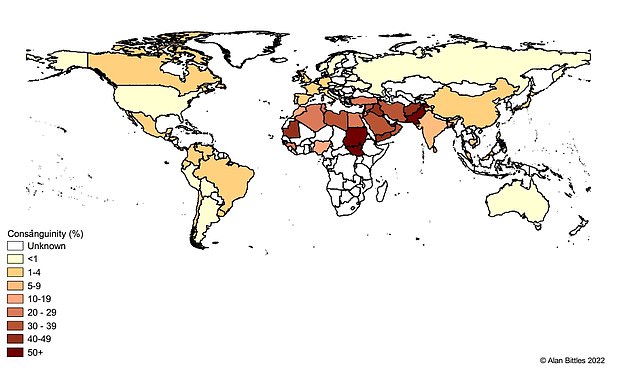
This map, produced by Australian genomics expert Professor Alan Bittles, shows rates of consanguineous marriage between cousins around the world, based on data gathered from several studies.
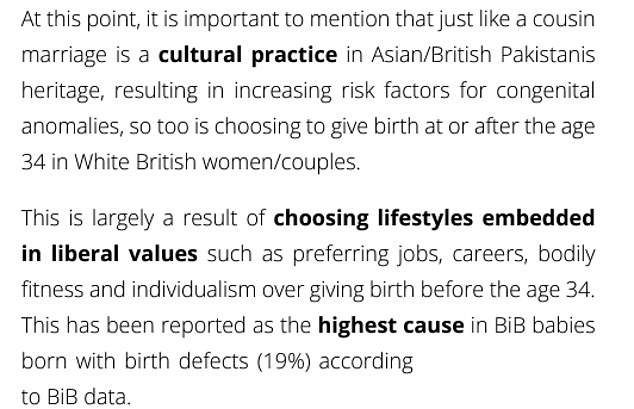

An NHS website hosting the Born in Bradford (BiB) research project describes that marrying your cousin is a cultural practice similar to that of white British women and couples who choose to have children after the age of 34 , another risk factor for genetic diseases.
Of the total of 125, approximately 43 percent were attributed to the result of first-degree relationships, those between parents and children.
Some were adopted as children and therefore likely had no idea of their parentage.
Incest – sex between immediate relatives – is illegal in the UK, even if consensual.
Marriages between certain blood relatives – as well as certain step relationships – are also illegal.
However, it is legal to marry your cousin in the UK.
Cousin marriage – which falls under the consanguineous category – was once common among the British upper classes, and was historically seen as a way of consolidating alliances and keeping wealth and land in the family.
Although old-fashioned, like other arranged marriages, this practice is still common in some British communities.
Experts have previously written about how the preference for cousin marriage among British Pakistanis was a contributing factor to infant mortality rates in Bradford due to an increased risk of genetic diseases.
NHS studies between 2007 and 2011 found that consanguineous marriages accounted for 60% of marital unions among people of Pakistani heritage in Bradford.
This compares to just 1 per cent among white British couples in the region.
Among marriages of Pakistani origin, 37 percent were to a first cousin.
Subsequent NHS studies, carried out between 2016 and 2020, found that the rate within this particular community had fallen to around 43%.
The NHS has previously said that cousin marriage accounted for around a third of birth defects in leaflets distributed to families in Bradford.
As part of a program tracking rates across the region, health chiefs describe cousin marriage as a cultural practice.
A text still available online today indicates that this is no different from white Britons choosing to have children over the age of 34, in terms of increasing a baby’s risk of genetic diseases.
Worldwide, it is estimated that one in ten people are the product of a consanguineous union.
Estimates of the prevalence of consanguineous marriages around the world vary.
Studies have shown that Pakistan has one of the highest union density rates in the world, at 65 percent.
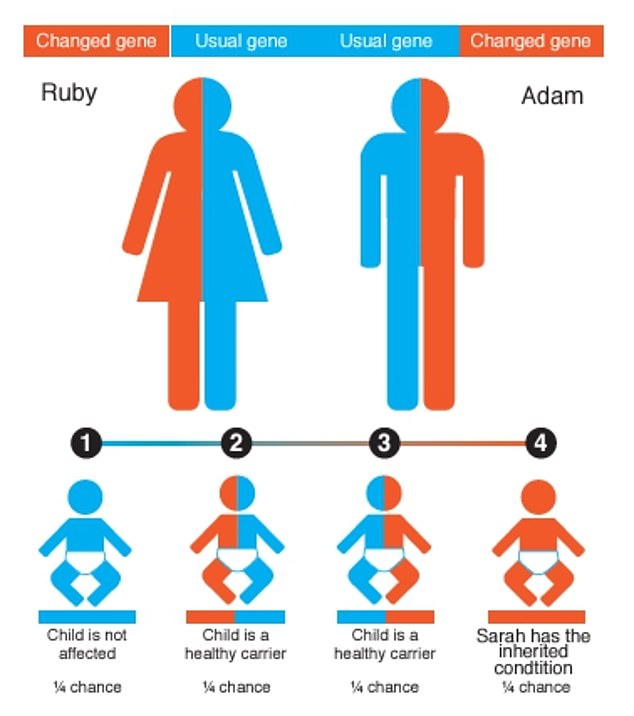

This graphic, from NHS Disrupted Materials with Bradford Couples, explains some of the genetic risks of having children with a close relative. Two parents carrying a recessive gene have an increased risk of having a child with a hereditary disease
This is followed by India (55 percent), Saudi Arabia (50 percent), Afghanistan (40 percent), Iran (30 percent) and Egypt and Turkey (20 percent each ).
Other data sets used by genetics experts studying consanguineous marriage indicate that the United Kingdom has a rate of 1 to 4 percent, while the United States has a lower rate of less than 1 percent.
Data suggests that the risk of a child from a first cousin union developing a genetic disorder is between 3 and 6 percent.
This means that the majority of children born in such circumstances will be healthy, but the increased risk is undeniable. This is about double the risk compared to children of unrelated parents.
Potential conditions include birth defects, developmental delays, and genetic disorders such as blindness, hearing loss, neonatal diabetes, and limb defects.
The risks largely increase the closer the genetic relationship between the parents, as well as the longer there is a family history of such unions, because genetic errors can worsen between generations.
At conception, children receive a copy of each parent’s genes, with harmful genetic mutations, called recessive genes, usually replaced by healthier, dominant genes.
But when closely related individuals have a child, genetic variation decreases.
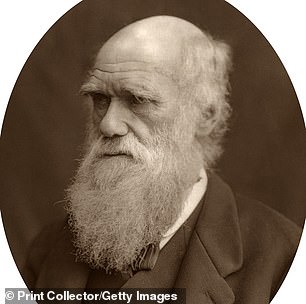

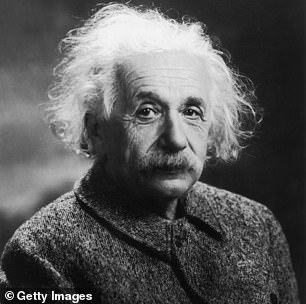

Scientific titans Charles Darwin (left) and famous physicist Albert Einstein (right) both married their first cousins
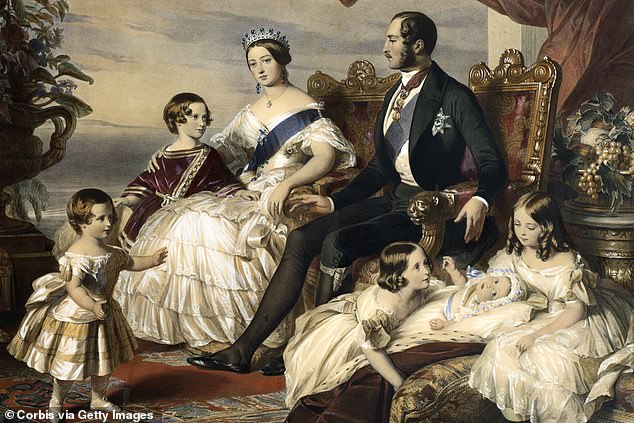

Queen Victoria and Prince Albert were first cousins and shared a family of grandparents


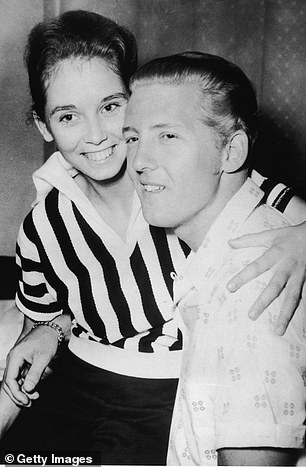

Former Iraqi dictator Saddam Hussein’s (left) first wife was his cousin Sajida Talfah. Musician Jerry Lee Lewis (right), famous for “Great Balls of Fire,” also controversially married his cousin Myra Gale Lewis Williams when she was just 13, he was 22 at the time .
This can lead to recessive genes not being overwritten and becoming dominant in a child, causing many types of congenital disabilities.
These can include low IQ, cleft palate, heart disease, cystic fibrosis and increased risk of infant death.
The growing interest in and availability of DIY genealogy kits, allowing people to trace their family genetic history, is leading many people to discover uncomfortable truths about themselves and their relationships.
This has in part led some people, including in the United States, to discover that they are the result of an incestuous union or, in some shocking cases, to learn that they married or had sex with someone who was later revealed to be a close relative.
First cousin marriages were once much more common and included famous historical figures.
The father of evolution, Charles Darwin, married his first cousin Emma Wedgwood, and the famous physicist Albert Einstein married his first cousin Elsa Lowenthal.
Authors Edgar Allan Poe and HG Wells were also known to have married their cousins.
The British royal family also engaged, like many European nobles, in consanguineous unions.
Queen Victoria and Prince Albert were first cousins and shared a set of grandparents.
In more modern times, former Iraqi dictator Saddam Hussein’s first wife was his cousin Sajida Talfah.
Musician Jerry Lee Lewis, of “Great Balls of Fire” fame, controversially married his cousin Myra Gale Lewis Williams when she was just 13, he was 22 at the time.
